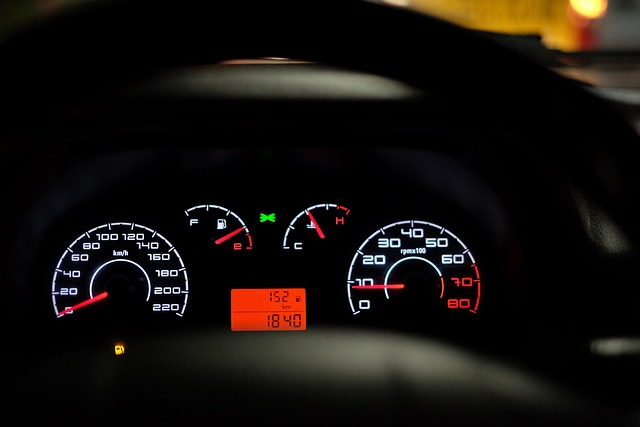Looking to register your car in California? This comprehensive guide walks you through the entire process, focusing on crucial steps like understanding the Vehicle Identification Number (VIN) verification and gathering essential documents. Learn about different registration types and navigate the online registration process seamlessly. Additionally, discover common mistakes to avoid for a smooth experience. By following these steps, you’ll be ready to hit the road legally in no time!
- Understanding the Vehicle Identification Number (VIN) Verification Process
- Gathering Necessary Documents for Car Registration
- Selecting an Appropriate Registration Type in California
- Step-by-Step Guide to Registering Your Vehicle Online
- Common Mistakes to Avoid During the Car Registration Procedure
Understanding the Vehicle Identification Number (VIN) Verification Process

When registering your car in California, understanding the Vehicle Identification Number (VIN) verification process is crucial. The state requires a valid and accurate VIN to ensure the vehicle’s history is traceable and to combat fraud. This involves cross-referencing the unique 17-character code with official databases to confirm its authenticity and check for any previous accidents or mechanical issues.
A mobile VIN verification service can simplify this process, allowing you to get your car checked while you wait. These services use advanced technology to perform a thorough inspection, comparing the provided VIN with state records. Alternatively, known as mobile VIN inspectors or mobile VIN verifiers, these professionals ensure that your vehicle’s identification information matches the data in the California Department of Motor Vehicles (DMV) system.
Gathering Necessary Documents for Car Registration

Before you begin the registration process, make sure to gather all the essential documents required by the California Department of Motor Vehicles (DMV). One crucial piece is the Vehicle Identification Number (VIN) verification. This can be done through a mobile vin inspection or a standard vin inspection to ensure the vehicle’s authenticity and history. You’ll need the title or registration certificate from the previous state, if applicable, as well as proof of insurance and a valid driver’s license.
Additionally, prepare your purchase agreement or sales contract, and any other documentation related to the transaction. It’s important to have all these documents in order to streamline the registration process at the DMV. They will also require you to pass an emissions test, so ensure your vehicle is up to date with maintenance to avoid delays.
Selecting an Appropriate Registration Type in California

When registering your car in California, understanding the different registration types is key to a smooth process. The state offers various options tailored to specific vehicle categories and uses. One essential factor in this decision is whether your vehicle is new or used. For newly purchased vehicles, typically a “new car” registration is required, which involves submitting documents like the purchase agreement and proof of delivery from the dealer.
For used cars, things get slightly more intricate. California mandates a vin verification process for all such vehicles, ensuring their authenticity and history. This is where selecting an appropriate registration type becomes crucial. Opting for a “used car” registration might involve employing a mobile vin verifier, allowing you to conduct the necessary inspection from the comfort of your home or a local service center. This streamlines the process, especially if you’re short on time or have had prior experiences with less-than-reputable dealers.
Step-by-Step Guide to Registering Your Vehicle Online

Registering your vehicle online in California is a straightforward process that can be completed within minutes. Here’s a step-by-step guide to make it hassle-free:
1. Gather Required Documents: Before you begin, ensure you have all essential paperwork ready. This typically includes your vehicle’s registration certificate from the previous state, proof of ownership (such as a bill of sale or vehicle title), and a valid driver’s license.
2. Initiate the Online Registration Process: Visit the official California Department of Motor Vehicles (DMV) website to access their online registration services. You’ll need your Vehicle Identification Number (VIN) for verification purposes, which can be easily obtained through a simple mobile VIN inspection or mobile VIN verifier. Once you’ve entered your VIN, follow the on-screen prompts to start the registration process.
3. Fill Out Application: Provide all the necessary details about your vehicle and yourself. This includes your contact information, vehicle specifications, and personal details. Make sure all information is accurate and up-to-date.
4. Upload Documents: Scan or take clear pictures of your required documents (as mentioned in Step 1) and upload them to the DMV website. Most mobile VIN verification services can assist with this step by providing digital copies of your documents.
5. Submit and Pay: Review your application for accuracy, make the necessary payment (using approved methods), and submit. You’ll receive a confirmation once your registration is successfully processed.
Common Mistakes to Avoid During the Car Registration Procedure

When registering your car in California, there are several common mistakes that individuals often make during this process. One of the most critical blunders to avoid is neglecting the importance of a proper vin verification. The Vehicle Identification Number (VIN) is like a unique fingerprint for your car, and accurate VIN data is essential for successful registration. Many people assume that a simple visual inspection is sufficient, but this can lead to errors, especially with older vehicles or those with modified parts.
Another mistake to steer clear of is relying solely on online registration services without ensuring the accuracy of your vehicle’s details. Always cross-reference information from various sources, including official government portals and reliable mobile vin verification or vin inspection tools. Using a reputable mobile vin verifier can save you time and effort while minimizing errors, as they provide quick and precise data checks. Remember, accurate documentation is key to a smooth car registration experience in California.
Registering a car in California involves several steps, from understanding VIN verification to gathering essential documents and selecting the right registration type. By following our step-by-step guide and avoiding common mistakes, you can streamline the process. Remember, accurate information is key, so ensure your details are correct to prevent delays or issues with your vehicle’s registration. Happy motoring!
